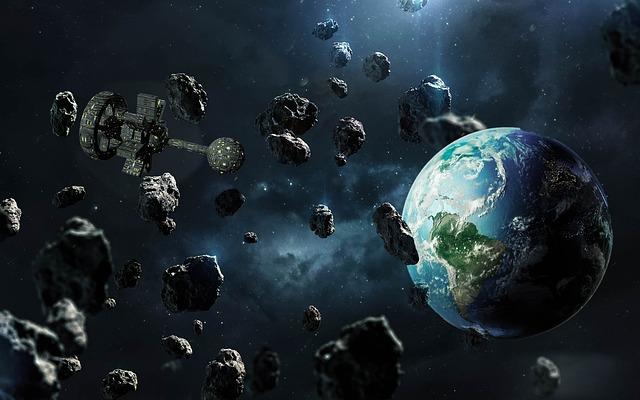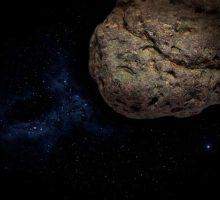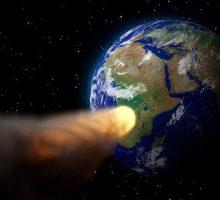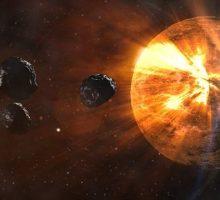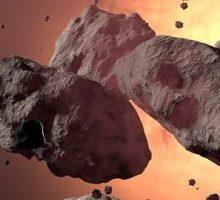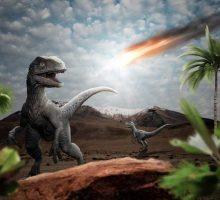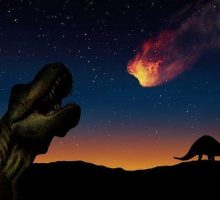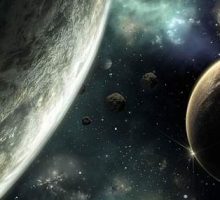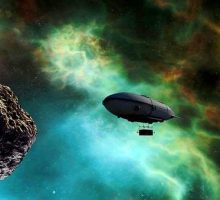- Introduction to Asteroids
- Definition of asteroids
- Types of asteroids
- How asteroids were formed
- Characteristics of Asteroids
- Size, shape, and composition of asteroids
- Surface features of asteroids
- Rotation and orbit of asteroids
- Asteroid Impact and Threats
- The history of asteroid impacts on Earth
- Potential threats of asteroid impacts
- Efforts to mitigate the threat of asteroid impacts
- Asteroid Mining and Exploration
- Potential resources found on asteroids
- Current efforts to mine asteroids
- Challenges of asteroid mining and exploration
- Asteroid Missions and Discoveries
- Famous asteroid missions (e.g. NASA’s OSIRIS-REx, JAXA’s Hayabusa)
- Discoveries made during asteroid missions
- Future asteroid missions planned by space agencies
- Asteroid Defense and Planetary Defense
- Asteroid deflection strategies
- Planetary defense initiatives to protect Earth from asteroid impacts
- The role of international cooperation in planetary defense
- Asteroid Science and Research
- The study of asteroids and their importance in space science
- Techniques used to study asteroids
- Findings and discoveries made through asteroid research
- Asteroid Myths and Pop Culture
- Popular myths and misconceptions about asteroids
- Depictions of asteroids in movies, TV shows, and books
- The impact of popular culture on public perceptions of asteroid
- Near-Earth Asteroids
- Definition and characteristics of Near-Earth asteroids (NEAs)
- Threats posed by NEAs
- Efforts to study and track NEAs
- Asteroid Families and Origins
- Definition of asteroid families
- How asteroid families are formed
- Insights into the early solar system through asteroid families
- Asteroids and the Search for Extraterrestrial Life
- How asteroids could provide clues to the origins of life
- The possibility of finding signs of extraterrestrial life on asteroids
- Current and future missions focused on astrobiology and asteroid exploration
- The Ethics of Asteroid Mining and Exploration
- Environmental impact of asteroid mining and exploration
- Ethical considerations related to exploiting resources found on asteroids
- Balancing scientific and commercial interests in asteroid mining and exploration
- Asteroids and Human Exploration of Space
- How asteroids could serve as stepping stones for human exploration of the solar system
- The potential for establishing human settlements on asteroids
- The challenges and benefits of human exploration of asteroids
- The Future of Asteroid Research and Exploration
- Advances in technology and their impact on asteroid research and exploration
- The role of private companies in asteroid exploration and mining
- The potential for groundbreaking discoveries through future asteroid missions
Introduction to Asteroids
Asteroids are fascinating celestial bodies that have intrigued scientists and space enthusiasts for decades. These small, rocky objects orbit the Sun and are primarily found in the asteroid belt, a region between Mars and Jupiter. In this blog, we will explore the characteristics of asteroids, how they were formed, and the different types of asteroids that exist.
Characteristics of Asteroids
Asteroids come in a wide range of sizes and shapes, with some measuring just a few meters across while others can be hundreds of kilometers wide. They are made up of a variety of materials, including rock, metal, and ice, and their surfaces can be smooth or covered in craters, ridges, and other features. Asteroids also have unique rotations and orbits, with some rotating slowly and others spinning rapidly, and some traveling in elliptical orbits while others move in more circular paths.
How Asteroids were Formed
The origin of asteroids is still a topic of debate among scientists, but one popular theory is that they are remnants of the early Solar System, dating back over 4 billion years. As the Solar System was forming, dust and gas began to coalesce into larger objects, eventually forming the planets we know today. However, not all of the material in the early Solar System was able to form into planets, and instead, some of it remained as smaller objects like asteroids.
Types of Asteroids
There are three main types of asteroids: C-type, S-type, and M-type. C-type asteroids are the most common and are made up of carbon-based materials. They tend to be dark in color and can be found in the outer regions of the asteroid belt. S-type asteroids are composed of silicate materials and are typically brighter in color. They are found in the inner region of the asteroid belt. M-type asteroids are made up of metallic materials like iron and nickel and are the least common type of asteroid. They can be found in both the inner and outer regions of the asteroid belt.
Characteristics of Asteroids
Asteroids are intriguing celestial objects that have captured the attention of scientists and space enthusiasts alike. These small, rocky bodies orbit the Sun and are primarily found in the asteroid belt between Mars and Jupiter. In this blog, we will explore the different characteristics of asteroids, including their size, shape, composition, surface features, and rotations.
Size, Shape, and Composition of Asteroids
Asteroids come in a variety of sizes, with some measuring just a few meters across while others can be hundreds of kilometers wide. Their shape can also vary greatly, from roughly spherical to elongated and irregular. The composition of asteroids is also diverse, with some being made up of rock and others consisting of metal or a mixture of both. Some asteroids even contain volatile substances like ice, which can evaporate when exposed to sunlight.
Surface Features of Asteroids
Asteroids have a wide range of surface features, including craters, ridges, valleys, and mountains. These features can provide clues about the asteroid’s history and how it has been shaped over time. Craters, for example, are formed when an asteroid collides with another object, while ridges and valleys can be created by tectonic activity or other geological processes.
Rotation and Orbit of Asteroids
Asteroids rotate around their axis as they orbit the Sun, and their rotation periods can vary from just a few hours to several days or even weeks. Some asteroids also exhibit a phenomenon known as “non-principal axis rotation,” where they tumble and spin irregularly. The orbit of an asteroid can also be highly elliptical or relatively circular, depending on its distance from the Sun and the gravitational forces of other objects in the Solar System.
Asteroid Impacts and Threats
Asteroids are fascinating celestial objects that can offer valuable insights into the history and formation of our Solar System. However, they can also pose a significant threat to our planet if they collide with Earth. In this blog, we will explore the impact of asteroids on Earth, the risks they pose to our planet, and the measures being taken to mitigate those risks.
Asteroid Impacts on Earth
Throughout Earth‘s history, asteroids have collided with our planet, leaving behind craters and causing widespread damage. The most well-known example of an asteroid impact is the Chicxulub crater in Mexico, which is believed to have been caused by an asteroid that struck Earth about 66 million years ago. This impact is thought to have led to the extinction of the dinosaurs and many other species.
Risks Posed by Asteroids
Asteroids that collide with Earth can cause devastating damage, depending on their size and speed. The impact of a large asteroid could trigger tsunamis, earthquakes, and fires, leading to widespread destruction and loss of life. Smaller asteroids can also pose a threat if they explode in the atmosphere, as was the case with the Chelyabinsk meteor that exploded over Russia in 2013, injuring over 1,000 people.
Mitigating the Risks of Asteroid Impacts
To mitigate the risks posed by asteroids, scientists and space agencies around the world are working to identify and track potentially hazardous asteroids. NASA’s Planetary Defense Coordination Office, for example, is responsible for monitoring asteroids that come within a certain distance of Earth and determining whether they pose a threat. In addition, efforts are being made to develop technologies that could deflect or destroy asteroids that are on a collision course with Earth.
Asteroid Mining and Exploration
Asteroids have long been a subject of fascination for space enthusiasts and scientists alike, and in recent years, the idea of mining asteroids for resources has gained traction. In this blog, we will explore the potential benefits and challenges of asteroid mining, as well as the current state of asteroid exploration.
The Potential Benefits of Asteroid Mining
Asteroids are rich in valuable resources, including metals such as iron, nickel, and platinum, as well as water and other volatiles that could be used to sustain human life in space. The resources on asteroids could potentially be used to support future space missions and even establish human settlements on other planets.
Challenges of Asteroid Mining
Asteroid mining presents several challenges, including the high costs associated with space exploration and mining, the technical difficulties involved in extracting resources from asteroids, and the legal and ethical considerations surrounding the ownership and use of resources in space.
Current State of Asteroid Exploration
Asteroid exploration has come a long way in recent years, with several missions launched to study and survey asteroids. NASA’s OSIRIS-REx mission, for example, successfully collected a sample from the asteroid Bennu in 2020, while the Japanese Hayabusa2 mission returned a sample from the asteroid Ryugu in 2020. Private companies such as SpaceX and Blue Origin have also expressed interest in asteroid mining, with plans to send missions to asteroids in the coming years.
Asteroid Missions and Discoveries
Asteroids have been a subject of study and fascination for astronomers and space enthusiasts for centuries. In recent years, space agencies around the world have launched several missions to study and explore asteroids, uncovering new discoveries and insights into the formation of our Solar System. In this blog, we will explore some of the most exciting asteroid missions and discoveries of the past few decades.
NASA’s Dawn Mission
NASA’s Dawn mission, launched in 2007, explored two of the largest objects in the asteroid belt – Vesta and Ceres. The mission provided valuable data on the composition and structure of these objects, revealing that Vesta was once a molten planetesimal and that Ceres may have a subsurface ocean. The mission ended in 2018, after the spacecraft ran out of fuel.
OSIRIS-REx
Mission Launched in 2016, NASA’s OSIRIS-REx mission aimed to collect a sample from the asteroid Bennu and return it to Earth. In 2020, the spacecraft successfully collected a sample, which is expected to provide valuable insights into the early Solar System and the origin of life on Earth.
Hayabusa Missions
The Japanese space agency JAXA launched two missions, Hayabusa and Hayabusa2, to study and collect samples from asteroids. The Hayabusa mission, launched in 2003, returned a sample from the asteroid Itokawa in 2010, while the Hayabusa2 mission returned a sample from the asteroid Ryugu in 2020. The missions provided important data on the composition and structure of these asteroids, as well as insights into their formation and evolution.
NEOWISE Mission
NASA’s NEOWISE mission, launched in 2009, aimed to survey the solar system for near-Earth objects (NEOs), including asteroids and comets. The mission provided valuable data on the size, composition, and orbit of these objects, helping to improve our understanding of the potential risks they pose to Earth.
Asteroid Defense and Planetary Defense
While asteroids are fascinating objects to study and explore, they also pose a potential threat to life on Earth. A large asteroid impact could have catastrophic consequences, causing widespread destruction and loss of life. As a result, space agencies and scientists around the world are working to develop strategies for asteroid defense and planetary defense. In this blog, we will explore some of the most promising asteroid defense strategies and their potential impact.
Detection and Monitoring
The first step in asteroid defense is detection and monitoring. NASA’s Planetary Defense Coordination Office (PDCO) is responsible for detecting and tracking near-Earth objects (NEOs) that could potentially pose a threat to Earth. The agency uses a range of ground-based telescopes and spacecraft to detect and monitor NEOs, allowing for early warning and preparation in the event of a potential impact.
Deflection Strategies
Once an asteroid has been detected and its orbit has been determined, scientists can begin to develop deflection strategies to divert the asteroid away from Earth. There are several potential methods for asteroid deflection, including the use of kinetic impactors, gravity tractors, and nuclear detonations. The most promising approach depends on the size, speed, and composition of the asteroid in question.
International Cooperation
Asteroid defense is a global challenge, and international cooperation is essential for developing effective strategies. In 2013, the United Nations established the International Asteroid Warning Network (IAWN) and the Space Mission Planning Advisory Group (SMPAG) to coordinate global efforts in asteroid defense and planetary defense.
Asteroid Science and Research
Asteroids are fascinating objects that offer a wealth of information about the history and formation of our Solar System. Through scientific research and exploration, scientists have been able to uncover valuable insights into the composition, structure, and behavior of asteroids. In this blog, we will explore some of the most exciting research and discoveries in the field of asteroid science.
Composition and Structure
One of the primary areas of research in asteroid science is the composition and structure of asteroids. Through the use of spectroscopy and other techniques, scientists have been able to identify the mineralogy and composition of asteroids, providing important clues about their formation and evolution. For example, some asteroids contain high concentrations of metal, while others are rich in water and organic compounds.
Origins and Evolution
Another area of research in asteroid science is the origins and evolution of asteroids. By studying the orbits and trajectories of asteroids, scientists can develop models for their formation and evolution over time. These models can provide insights into the early Solar System and the conditions that led to the formation of planets and other celestial bodies.
Impact and Hazards
Asteroid impacts pose a potential hazard to life on Earth, and understanding the behavior and characteristics of asteroids is essential for mitigating this risk. Through the use of simulations and modeling, scientists can study the potential impact of asteroids and develop strategies for asteroid defense and planetary defense.
Asteroid Myths and Pop Culture
Asteroids have captured the imagination of people around the world for centuries, inspiring countless myths, legends, and works of art. In modern times, asteroids have also played a prominent role in pop culture, appearing in movies, television shows, and video games. In this blog, we will explore some of the most popular asteroid myths and their influence on pop culture.
Myth:
Asteroids are always on a collision course with Earth One of the most persistent myths about asteroids is that they are constantly hurtling towards Earth and pose an imminent threat to life on our planet. While it is true that some asteroids do cross Earth’s orbit, the vast majority of them pose no threat to our planet. In fact, NASA and other space agencies are actively working to detect and monitor asteroids and mitigate the risk of potential impacts.
Pop Culture Influence:
The movie “Armageddon” The 1998 movie “Armageddon” portrays a group of oil drillers sent on a mission to destroy an asteroid on a collision course with Earth. While the movie takes some liberties with the science of asteroid deflection, it remains one of the most popular depictions of asteroids in pop culture.
Myth:
Asteroids are made of gold and other valuable metals Another common myth about asteroids is that they are rich in valuable metals such as gold, platinum, and palladium. While some asteroids do contain metals and other valuable resources, the cost and complexity of asteroid mining make it an unlikely source of wealth in the near future.
Pop Culture Influence:
The TV show “Cowboy Bebop” The anime series “Cowboy Bebop” features a group of space bounty hunters who capture criminals and collect bounties. In one episode, the crew encounters an asteroid filled with valuable “prisoner’s ore,” leading to a dangerous race to claim the bounty.
Myth:
Asteroids are home to intelligent life Another popular myth about asteroids is that they are home to intelligent life, often depicted as advanced civilizations of aliens. While there is no evidence of intelligent life on asteroids, the possibility of microbial life and the potential for future human colonization remain areas of scientific inquiry.
Pop Culture Influence:
The video game “Mass Effect” The popular video game series “Mass Effect” features a vast universe filled with diverse alien species, including some that live on asteroids and other celestial bodies. While the game takes some liberties with the science of space travel and alien life, it remains a beloved example of the intersection between science fiction and pop culture.
Near-Earth Asteroids
Asteroids are rocky objects that orbit the Sun, and many of them can be found in the asteroid belt between Mars and Jupiter. However, some asteroids have orbits that bring them much closer to Earth, and these are known as near-Earth asteroids (NEAs). In this blog, we will explore what NEAs are, why they are important, and what we are doing to study and protect ourselves from them.
What are Near-Earth Asteroids (NEAs)?
NEAs are asteroids with orbits that bring them within 1.3 astronomical units (AU) of the Sun, which is closer than the distance between Earth and Mars. Some NEAs have orbits that bring them even closer to Earth, making them a potential threat to our planet if they were to collide.
Why are NEAs important?
NEAs are important for a number of reasons. First, they provide scientists with an opportunity to study the early Solar System and the formation of planets. Because NEAs are relatively small and have not undergone the same processes of heating and differentiation as larger objects, they are like time capsules that can give us a glimpse into the past.
Second, NEAs are potential resources for future human exploration and settlement. Because they are relatively close to Earth, they could be mined for valuable resources such as water, metals, and other materials that could be used to support space exploration and settlement.
Finally, NEAs are a potential threat to our planet if they were to collide with Earth. While the probability of such an event is low, the consequences could be catastrophic, making it important for us to study and understand NEAs in order to protect ourselves from potential impacts.
How are we studying NEAs?
NASA and other space agencies around the world are actively studying NEAs in order to better understand their properties, trajectories, and potential impact risks. This involves using a variety of telescopes and other instruments to observe and track NEAs as they pass by Earth, as well as sending spacecraft to study them up close.
One notable example of this is NASA’s OSIRIS-REx mission, which launched in 2016 and is currently studying a near-Earth asteroid named Bennu. OSIRIS-REx is set to return to Earth with a sample of Bennu’s surface material in 2023, which will provide scientists with valuable insights into the composition and history of this asteroid.
How are we protecting ourselves from potential NEA impacts? NASA and other space agencies are also working to develop strategies for protecting ourselves from potential NEA impacts. This includes developing ways to deflect or destroy NEAs that are on a collision course with Earth, as well as improving our ability to detect and track potentially hazardous asteroids.
Asteroid Families and Origins
Asteroids are ancient remnants from the early Solar System, and studying their origins can provide us with valuable insights into the formation and evolution of our Solar System. One way that astronomers study asteroids is by looking at their families – groups of asteroids that share similar orbital characteristics and may have originated from a common parent body. In this blog, we will explore what asteroid families are, how they form, and what they can tell us about the early Solar System.
What are asteroid families?
Asteroid families are groups of asteroids that share similar orbital characteristics, such as their semi-major axis, eccentricity, and inclination. These asteroids are believed to have originated from a common parent body, such as a larger asteroid or planetesimal, which was disrupted by a collision or other catastrophic event. Over time, the fragments from the parent body have dispersed into their own distinct orbits, forming a family of asteroids.
How do asteroid families form?
Asteroid families can form in a number of ways. One common way is through collisional disruption, where a larger asteroid or planetesimal is hit by another object, causing it to break apart into fragments. The fragments then disperse into their own distinct orbits, forming a family of asteroids.
Another way that asteroid families can form is through gravitational interactions with planets. As asteroids orbit the Sun, they can be influenced by the gravity of nearby planets, causing their orbits to become perturbed and leading to the formation of families.
What can asteroid families tell us about the early Solar System?
Studying asteroid families can provide us with valuable insights into the formation and evolution of our Solar System. By analyzing the properties of asteroids in a family, such as their composition and size distribution, we can learn about the physical and chemical conditions of the parent body that formed them.
For example, the Vesta family of asteroids is believed to have originated from a large asteroid named Vesta, which is one of the largest objects in the asteroid belt. By studying the composition and size distribution of the Vesta family asteroids, scientists have been able to infer the properties of Vesta itself, such as its size, density, and surface composition.
In addition, studying asteroid families can also help us understand the dynamics of the early Solar System. By analyzing the orbits of asteroids in a family, we can learn about the gravitational interactions and other forces that shaped the orbits of these objects over time.
Asteroids and the Search for Extraterrestrial Life
Asteroids are not just fascinating objects to study for their origins and potential impact on Earth – they may also hold clues to the search for extraterrestrial life. In this blog, we will explore how asteroids can provide insights into the search for life beyond our Solar System, and how scientists are using them to identify potential targets for future exploration.
Asteroids and the building blocks of life
One reason why asteroids are important in the search for extraterrestrial life is that they contain the building blocks of life. These building blocks include amino acids, organic compounds, and even water, which are all essential for the formation and sustenance of life.
For example, in 2010, NASA’s Stardust mission returned samples from the coma of comet Wild 2. The samples contained a variety of organic compounds, including glycine – the simplest amino acid – and ribose – a sugar that is a key component of RNA. This discovery provided strong evidence that the building blocks of life are present in comets and asteroids, and may have played a role in the origin of life on Earth.
Asteroids as potential habitats for life
In addition to containing the building blocks of life, asteroids themselves may also be potential habitats for life. Some asteroids, such as the dwarf planet Ceres, have been found to have subsurface oceans of liquid water, which could provide a suitable environment for microbial life.
Furthermore, some scientists have proposed that asteroids could serve as “life rafts” that transport microbial life between planets and even between star systems. If this is true, then studying the composition and origin of asteroids could provide insights into the distribution and evolution of life throughout the Universe.
Identifying targets for exploration
Finally, asteroids are also important in the search for extraterrestrial life because they may provide potential targets for future exploration. NASA’s OSIRIS-REx mission, for example, is currently exploring the asteroid Bennu, which is believed to be a primitive, carbon-rich asteroid that contains organic compounds and other materials that may hold clues to the origin of life.
In addition, asteroids may also serve as potential targets for future manned missions, providing valuable resources such as water and metals for space exploration and settlement.
The Ethics of Asteroid Mining and Exploration
As we continue to explore and study asteroids, the possibility of mining them for valuable resources becomes increasingly feasible. However, as with any new industry, the ethical implications of asteroid mining and exploration must be carefully considered. In this blog, we will explore some of the ethical questions and concerns surrounding the practice of asteroid mining.
Ownership and exploitation of resources
One of the most pressing ethical concerns surrounding asteroid mining is the issue of ownership and exploitation of resources. Currently, there are no international laws or regulations in place to govern the ownership of resources in space. As a result, companies and nations are free to claim and exploit resources from asteroids without any legal repercussions.
However, this raises questions about the fair distribution of resources and the potential for exploitation of weaker nations or communities. Critics argue that the benefits of asteroid mining should be shared equally among all nations, and that stronger regulations should be put in place to prevent exploitation.
Environmental impacts
Another ethical concern surrounding asteroid mining is the potential environmental impacts. Mining operations could cause damage to the asteroid itself, as well as the surrounding environment. This could have long-term consequences for the asteroid’s stability and its potential as a target for future exploration and research.
In addition, the process of mining and transporting materials from asteroids could also have negative impacts on the environment of Earth and other celestial bodies. Critics argue that the potential environmental damage outweighs the potential benefits of asteroid mining, and that alternative solutions should be pursued.
Worker safety and compensation
Finally, the safety and compensation of workers involved in asteroid mining is another important ethical consideration. Mining operations in space are inherently risky and could put workers in danger. Therefore, companies must take steps to ensure the safety of their workers and provide fair compensation for their work.
Furthermore, there are concerns about the exploitation of workers in the space industry. Critics argue that companies could take advantage of the lack of regulations and exploit workers by paying low wages or providing poor working conditions.
Asteroids and Human Exploration of Space
Asteroids have long been a subject of interest for human exploration of space. With their potential for valuable resources and their proximity to Earth, they offer a unique opportunity for scientific study and human expansion beyond our planet. In this blog, we will explore the role of asteroids in the human exploration of space.
Asteroids as stepping stones
One of the main reasons asteroids are of interest to human exploration is their potential as stepping stones to deeper space. By establishing a presence on asteroids, humans could test technologies and techniques for longer-term space travel and colonization. They could also serve as bases for refueling and resupplying on long missions.
In addition, asteroids could be used as a platform for launching missions to Mars and other planets. By establishing a base on an asteroid, humans could avoid the high gravitational pull of Earth and reduce the amount of fuel needed to reach their destination.
Scientific study
Asteroids also offer a unique opportunity for scientific study. By studying the composition and structure of asteroids, scientists can gain insights into the formation and evolution of the solar system. They can also search for clues about the origin of life on Earth and the potential for life elsewhere in the universe.
In addition, asteroids offer a chance to study the effects of microgravity and space radiation on living organisms. By studying the behavior of plants, animals, and humans in space, scientists can better understand the challenges of long-term space travel and the potential for human colonization of other worlds.
Resource extraction
Finally, asteroids offer the potential for valuable resource extraction. Some asteroids contain large amounts of metals, minerals, and other valuable resources, including water. These resources could be used to sustain human colonies on asteroids or in deeper space, and could even be used to support life on Earth.
However, it is important to consider the ethical implications of resource extraction from asteroids, as discussed in our previous blog on “The Ethics of Asteroid Mining and Exploration.”
The Future of Asteroid Research and Exploration
The study and exploration of asteroids have come a long way since the first asteroid was discovered in 1801. Today, we have a wealth of knowledge about these small celestial bodies, and the potential they hold for scientific research, resource extraction, and even human expansion beyond our planet. In this blog, we will explore the future of asteroid research and exploration.
Improved technology
Advancements in technology have enabled us to study and explore asteroids in ways that were once impossible. Today, we have space probes equipped with powerful cameras, spectrometers, and other scientific instruments that can analyze the composition and structure of asteroids in great detail. We also have improved propulsion systems and landing technologies that allow us to land on asteroids and even extract samples.
In the future, we can expect further advancements in technology that will make asteroid research and exploration even more efficient and productive. For example, new propulsion technologies such as solar sails and ion drives could allow us to travel farther and faster, while advanced robotics could enable us to extract resources from asteroids more efficiently.
Commercial interest
Another major factor driving the future of asteroid research and exploration is commercial interest. Private companies such as SpaceX and Blue Origin have expressed interest in asteroid mining and exploration, seeing it as a potential source of valuable resources and a way to support human expansion beyond Earth.
While this commercial interest has the potential to accelerate progress in asteroid research and exploration, it also raises questions about ownership and the ethical implications of resource extraction from space.
Planetary defense
Asteroids also pose a potential threat to Earth, as discussed in our previous blog on “Asteroid Impact and Threats.” In the future, we can expect increased efforts to monitor and defend against potentially hazardous asteroids.
This could involve the development of new technologies for detecting and deflecting asteroids, as well as increased international cooperation and funding for asteroid defense programs. It may also involve the establishment of permanent observation outposts or even asteroid missions dedicated solely to planetary defense.
Collaboration and exploration
Finally, the future of asteroid research and exploration will likely involve increased collaboration and cooperation among nations and organizations. With the potential for valuable resources, scientific insights, and even new frontiers for human expansion, asteroids are a subject of interest to people around the world.
In the future, we can expect increased international cooperation and collaboration in asteroid research and exploration. This could involve joint missions, shared data and resources, and even the establishment of international asteroid research and exploration organizations.

